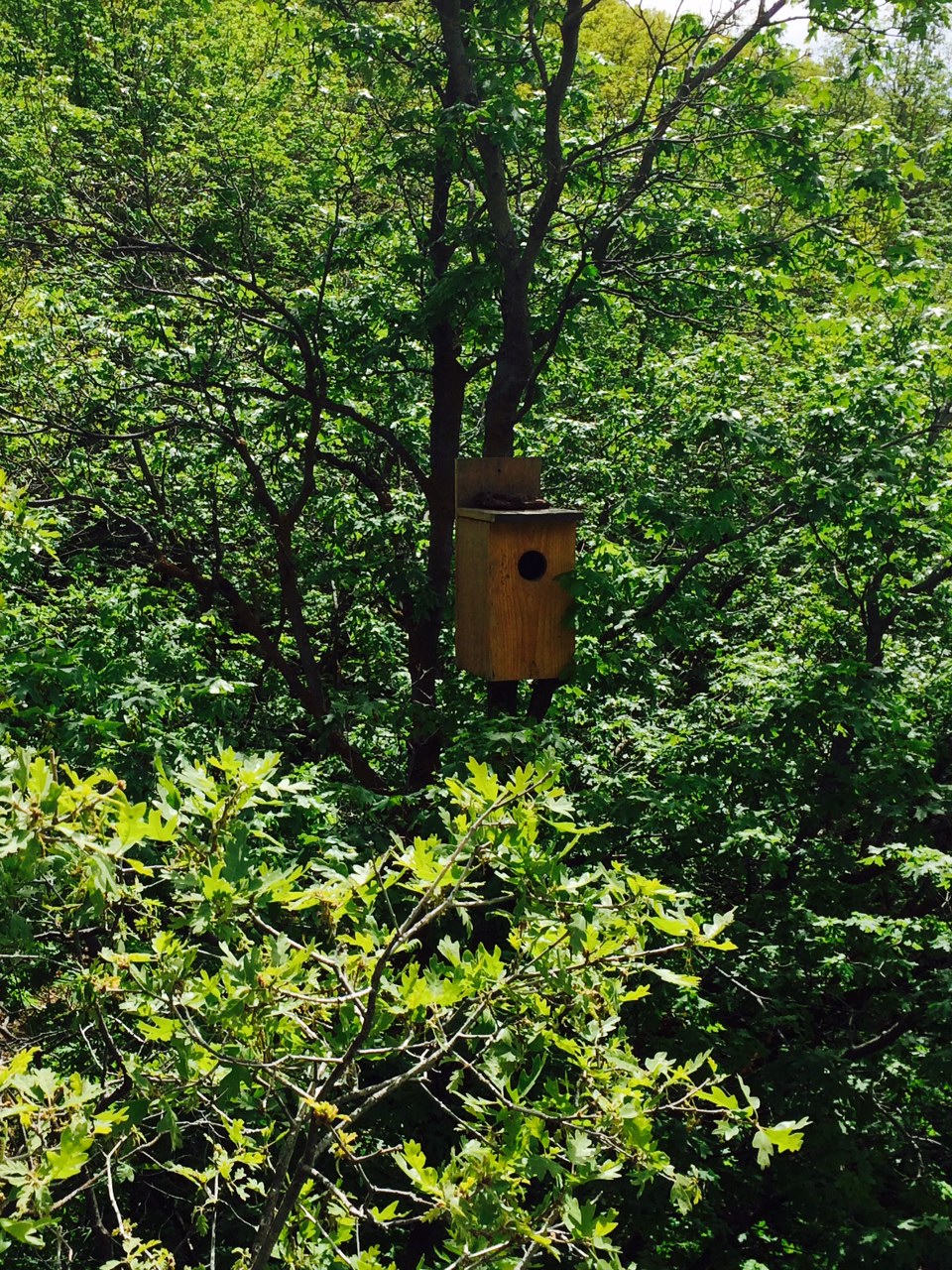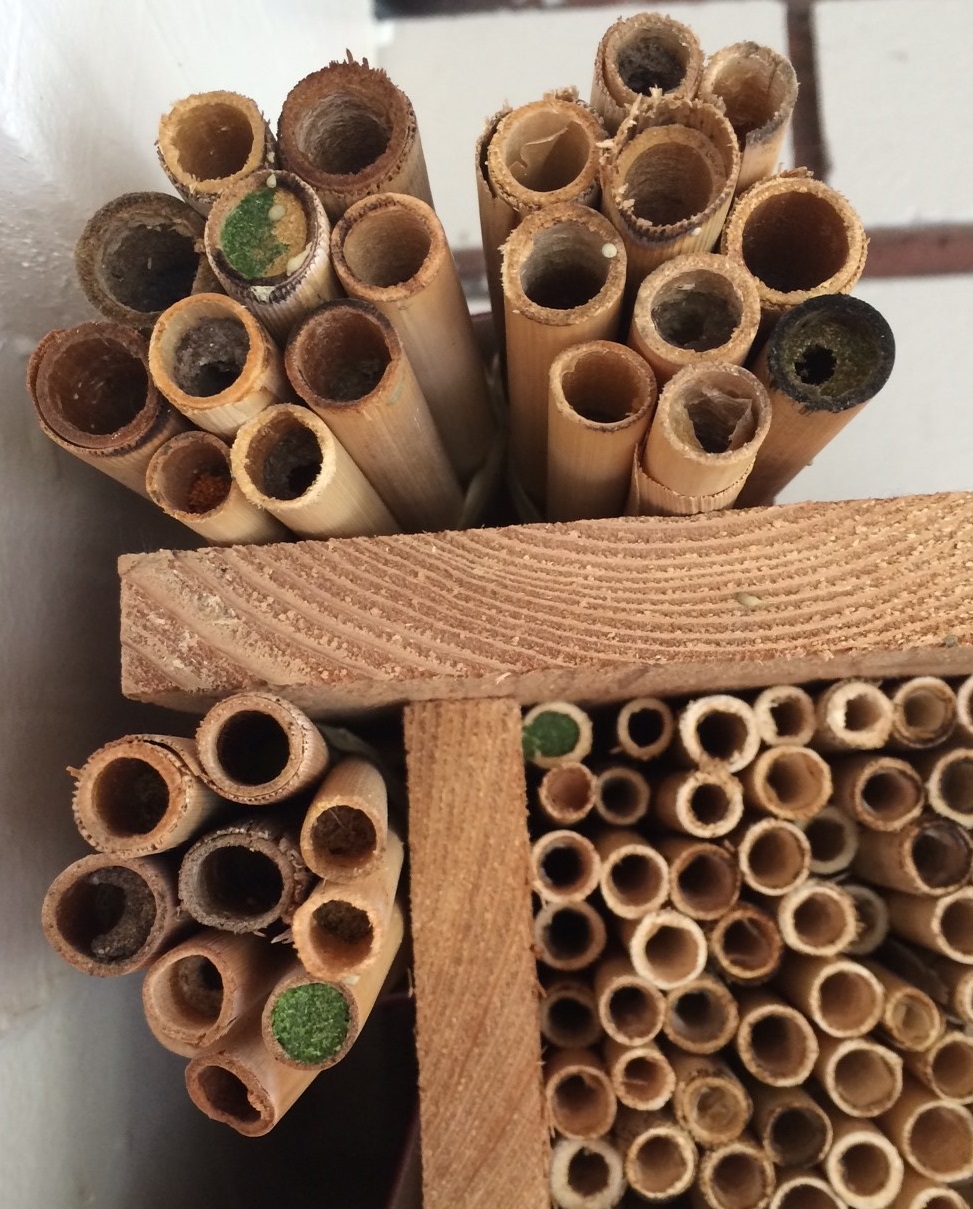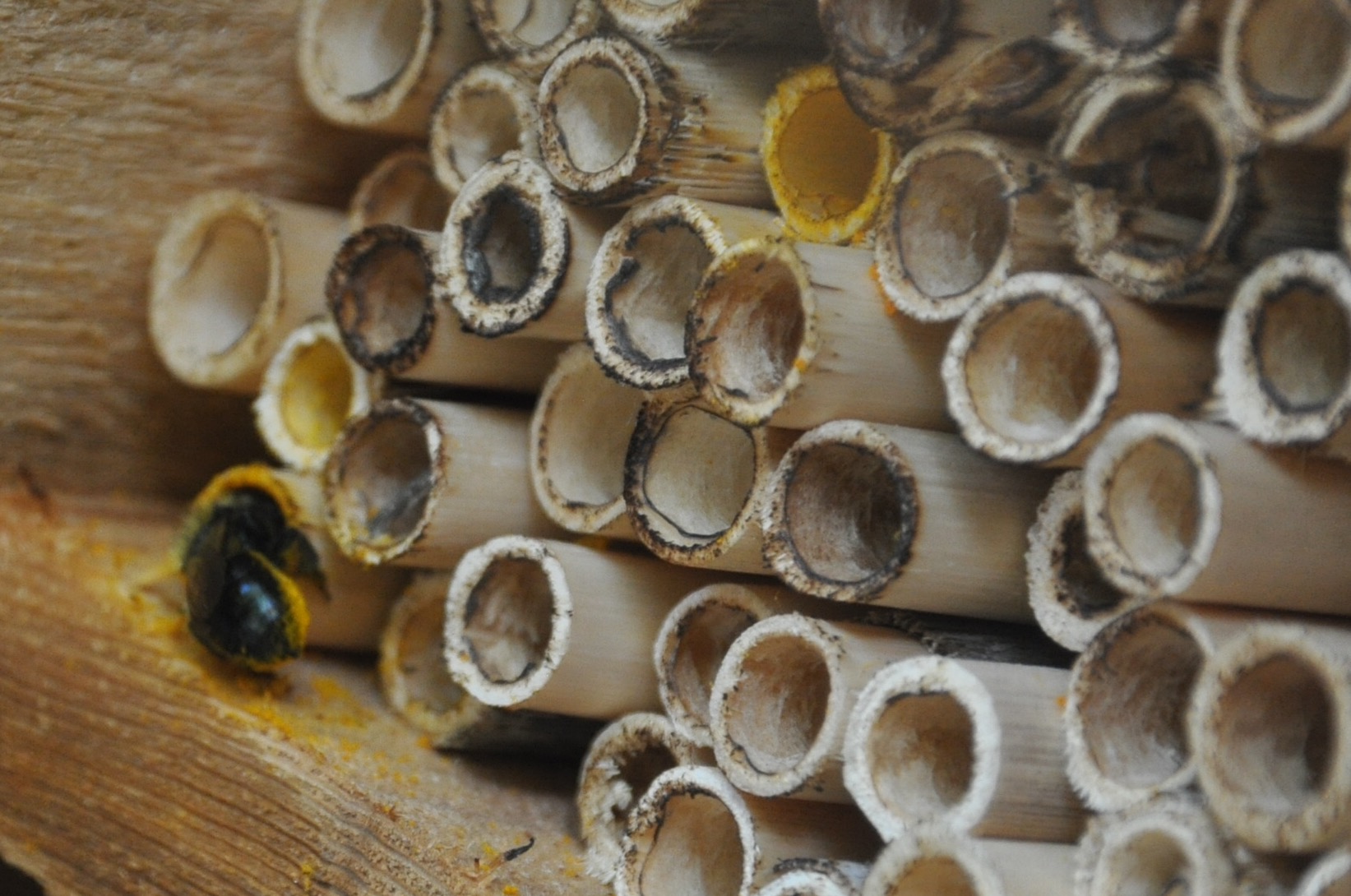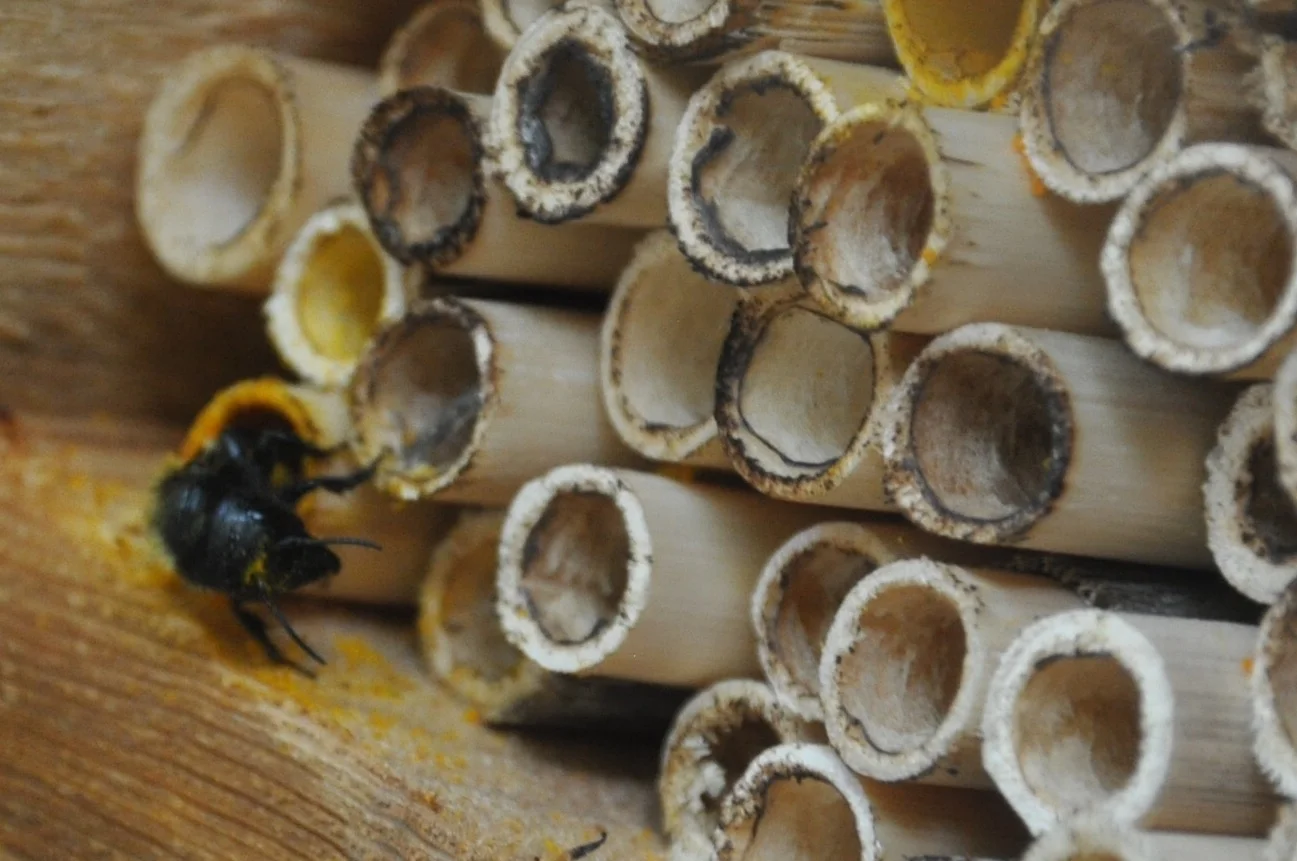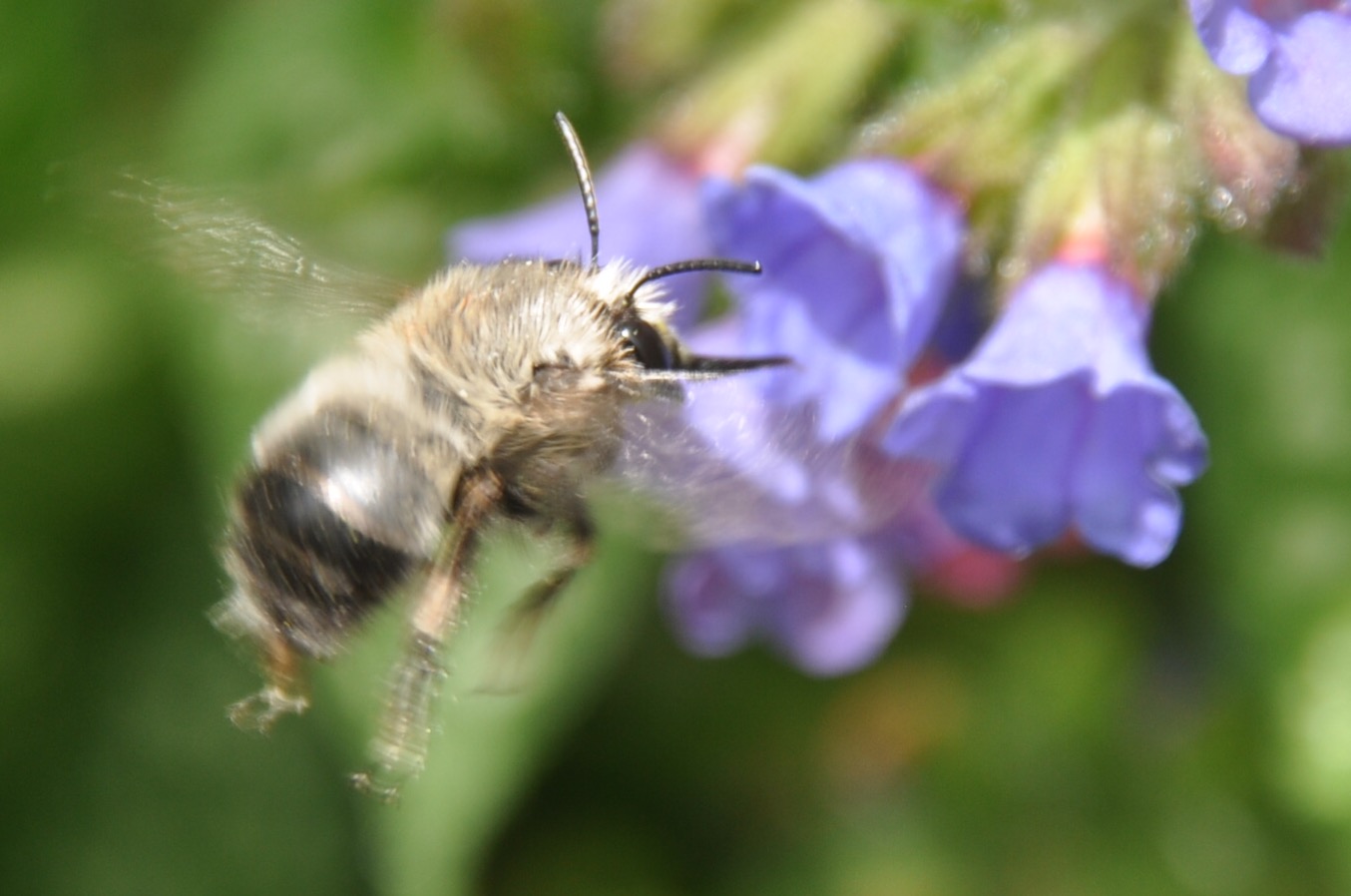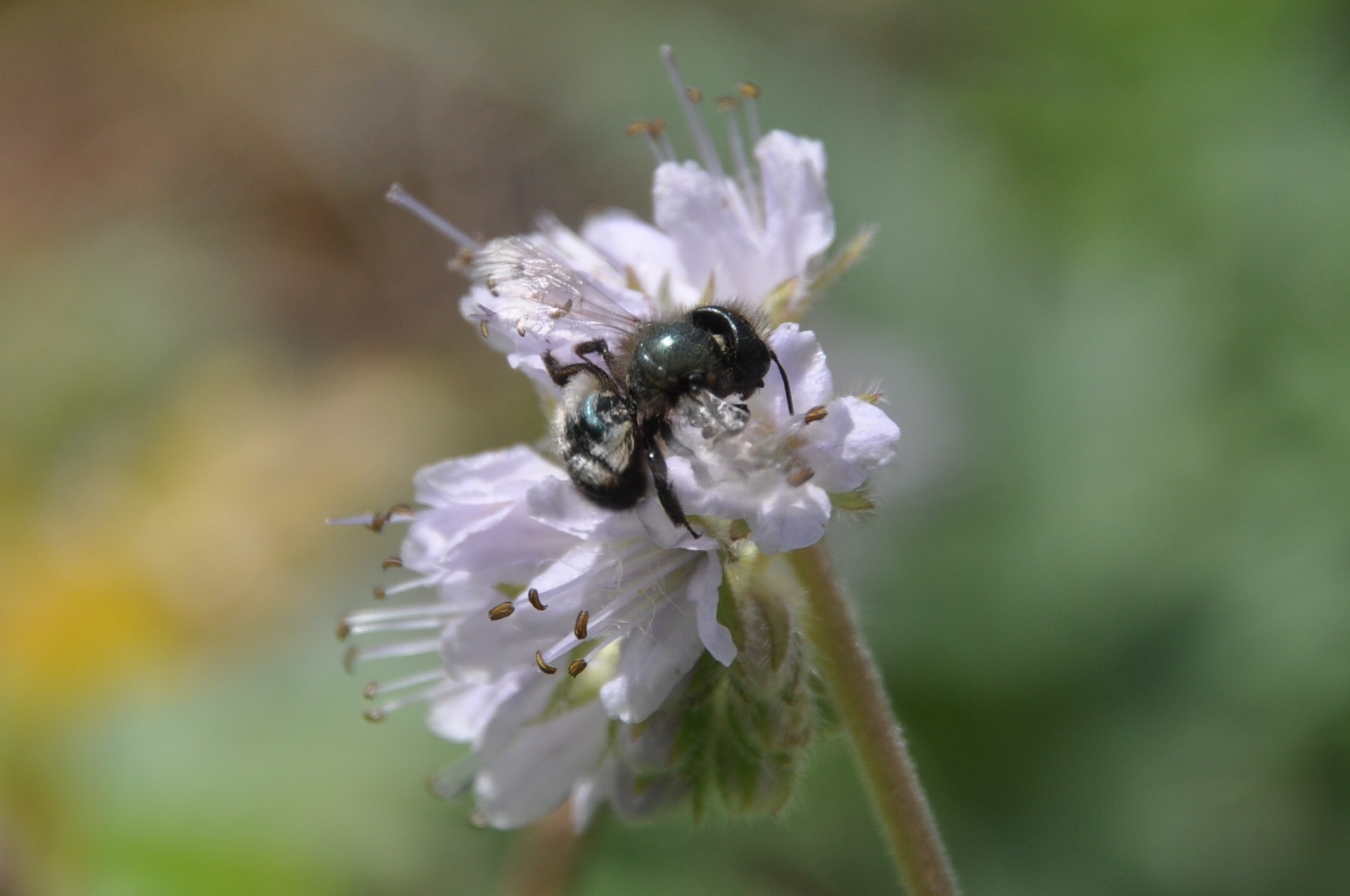Too cute... I climbed the tree to collect a bee leaving the box and decided to peek inside. As you can see, the owl and owlet were absolutely DEAD asleep. So much for my worry about disturbing them..
Western screech owls living below 1+ unknown species of mason bee.
Who knew owls could live peacefully below a bee apartment complex? Or, that bees would think nothing of provisioning their nests inches from an owl family.. I suppose this might happen often in trees but we seldom get a view of it.


